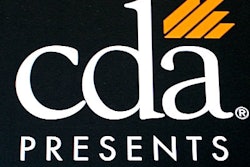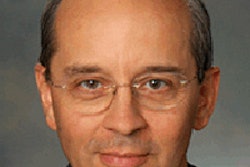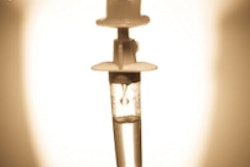
Does your office have a written plan in case of a medical emergency? If not, now is a great time to implement one, according to a well-attended session on emergencies at the 2016 Midwinter Meeting in Chicago.
Despite your best efforts as a dental professional, medical emergencies can still happen, and the best time to prepare for one is before it occurs. At the meeting, Theodore Passineau, JD, a medical malpractice attorney, and John Green, DDS, JD, who practices both dentistry and law, emphasized preparing for an emergency helps keep your patients safe and also protects against litigation.
"All we're trying to do is stop them from getting any worse [until the paramedics arrive]," Passineau said. "Your goal is to do everything you can to get them to professionals as quickly as possible."
Below are five steps you can implement to help prepare for a medical emergency.
1. Get a defibrillator
An automated external defibrillator (AED) is a battery-powered device that can restore regular heart rhythm for a person who has undergone sudden cardiac arrest. The device analyzes the heart's rhythm and will deliver an electrical shock if necessary. It provides easy-to-understand instructions that can even be used by someone without medical training, and Passineau described an AED as "foolproof."
If you aren't doing dental sedation, you are not required to have an AED; however, Dr. Green recommended all practices have one because an emergency can still happen, even if it has nothing to do with your treatment.
"I recommend you have one," Dr. Green said. "I'm not saying it's the standard of care, but ... I would expect my healthcare provider to have one."
2. Keep basic emergency drugs around
Passineau and Dr. Green advised session attendees to keep several medications on hand that are recommended by the ADA in case of medical emergencies. The list includes the following:
“We can't guarantee the results. We never can. But we can be prepared.”
- Epinephrine for a severe allergic reaction or severe asthma
- Diphenhydramine for a mild allergic reaction
- Bronchodilator, such as albuterol, for mild asthma
- Nitroglycerin for angina
- Glucose, such as orange juice, for hypoglycemia
- Aspirin for myocardial infarction
- Aromatic ammonia for syncope
3. Carry a current CPR card
Every person in your practice should know how to perform cardiopulmonary resuscitation (CRP), because it is a powerful lifesaving skill that can help those inside and outside of your practice, Passineau said.
"Everybody -- and I mean everybody -- in your practice should be carrying a current CPR card," he explained. "You could be the receptionist, you could be the billing person, but ... this isn't limited to where it's applicable."
4. Designate tasks ahead of time
Passineau and Dr. Green suggested coming up with a written office plan and designating emergency positions ahead of time. Passineau noted that it is best to designate the positions by office role rather than by person in case someone is sick or absent.
"[That way] when things happen, we just do what we're trained to do," he said. "We don't worry about someone else doing their job. Just focus on yours."
Passineau recommended one person, ideally the receptionist, call 911 as quickly as possible in case of a medical emergency. That person should also be responsible for preparing for the arrival of paramedics.
For instance, he or she should have an appropriately wide (at least 6 feet) elevator ready for emergency medical services (EMS). The person should also be visible where EMS will pull in.
Passineau also recommended the dentist or dental hygienist stay with the patient and that another person, such as an office manager, contact his or her family members.
Finally, Passineau recommended that one person, such as a dental assistant, should act as the scribe. The scribe is responsible for documenting everything that happens, including who performed what actions and when, vital signs, and any medications taken. The documentation will not only be useful for your dental practice, but it is also useful for paramedics and doctors who will eventually be treating the patient.
5. Hold medical emergency run-throughs
Once you develop a medical emergency plan, the best way to put it to the test is to run some practice drills and look for what goes wrong. Passineau even recommended inviting EMS into the practice, so they can offer advice.
"We can't guarantee the results. We never can," he said. "But we can be prepared."



















